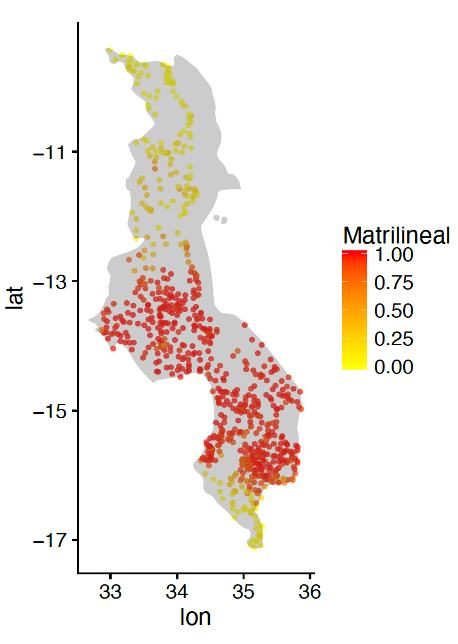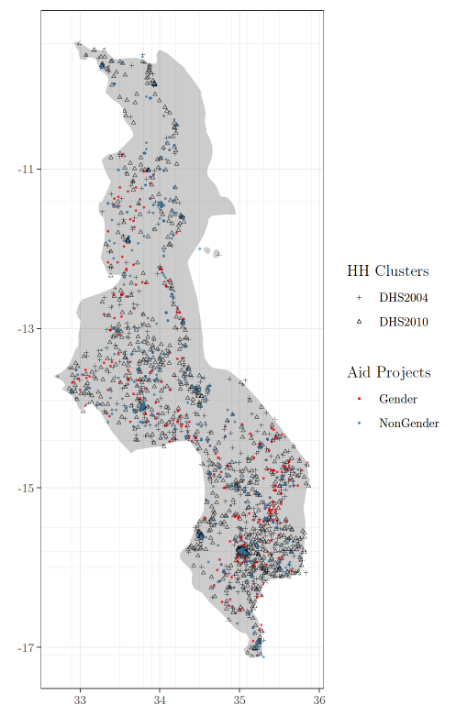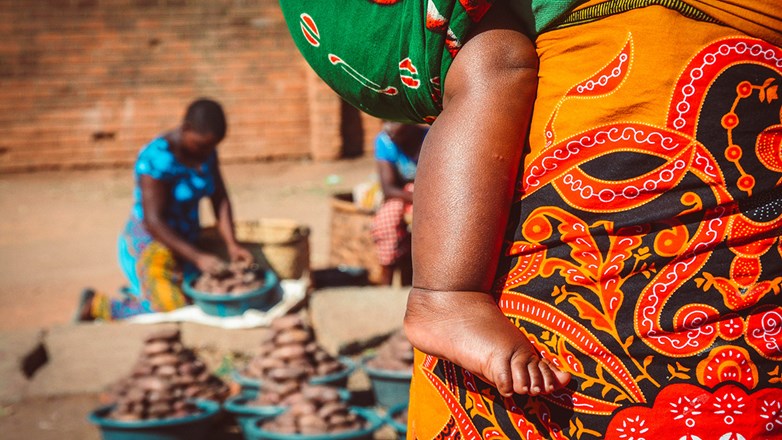Does foreign aid foster female empowerment?
Over decades much attention has been devoted to the relationship between foreign aid and economic growth, while few studies have focused on the effects of foreign aid on female empowerment. This despite the fact that empowerment of girls and women is a key driver of development, and often an explicit objective of foreign aid. Using geo-coded data on aid project placement and household-level survey responses, Perrotta Berlin, Bonnier and Olofsgård (2023), show that foreign aid has a modest but robust effect on several dimensions of female empowerment. This is the case for both aid in general and gender-targeted aid, highlighting the potential of foreign aid to reduce gender inequalities. It is also found, though, that the impact is contingent on the context, and that there can even be a backlash in male attitudes towards female empowerment in more traditional communities.
The donor community has long been invested in the empowerment of women and girls, and the 2030 Agenda for Sustainable Development also includes gender equality as an explicit goal. Yet surprisingly little quantitative research has tried to make a broader assessment of the effect of foreign aid on gender equality measures.
This policy brief summarises a study by Perrotta Berlin, Bonnier and Olofsgård (2023) which addresses this question by matching the location of aid projects with geo-coded household surveys in Malawi between 2004 and 2010. Analysing the community-level impact on five different female empowerment indices, the study finds foreign aid to affect positively women’s empowerment across several dimensions. Furthermore, the authors find that gender-targeted aid has an additional impact on an index measuring women’s control over sexuality and fertility-related decisions and an index focusing on violence against women.
When considering areas with patrilineal land inheritance traditions, the results however partly shift, especially in relation to men’s attitudes. This implies that the success of foreign aid and gender-targeted aid in reducing gender inequalities may be conditional on the community context.
Gender equality and foreign aid in Malawi
Malawi is highly dependent on foreign aid. Net official development assistance (ODA) has exceeded 10 percent of gross national income yearly since 1975, reaching as high as 23.5 percent in 2016 (World Bank, WDI database).
In recent years, reforms have been undertaken by the Malawian government to improve gender equality. The minimum legal age of marriage was raised from 15 to 18 through the 2015 Marriage, Divorce and Family Relations Bill, and the 2013 Gender Equality Act strengthened the legislation concerning gender-based violence and included a universal condemnation of all types of gender-based discrimination. Yet, in 2020, Malawi was ranked 116 out of 153 in the World Economic Forum Gender Gap Report and 172 out of 189 in UNDP’s Gender Inequality Index. An area of concern regards the high rates of child marriage, with 9 percent of girls already married at age 15 and 42 percent by the age of 18. Alongside these numbers, 31 percent of women report to have given birth by the age 18.
Another aspect potentially influencing gender equality is the prevalence of matrilinear land tenure systems, particularly in the southern and central parts of the country (as depicted in Figure 1). While previous research has shown that land ownership empowers women and suggested that property rights affect decision power over key decisions, fertility preferences, age of marriage etc., less research has been devoted to analysing the effects on women’s empowerment outcomes in a matrilinear kinship setting. Some recent literature however suggests women in matrilinear societies have greater say in household decisions – including financial ones – and are less accepting of, as well as exposed to, domestic violence (Lowes, 2021; Djurfeldt et al., 2018).
Figure 1. Intensity of matrilineal tenure in Malawi.
Notes: The figure plots the geographic distribution of the authors’ matrilineal indicator. They base their definition of matrilineal societies on the ethnic identification of individual respondents. The intensity at the cluster level varies between 0 and 1 representing the share of respondents that identify themselves as belonging to one of the ethnic groups classified as matrilineal. Source: Perrotta Berlin, Bonnier, Olosgård (2023).
Methodology and data
For the analysis, the authors make use of geo-coded data on aid projects from the Government of Malawi’s Aid Management Platform (AMP) and match it to household-level data from the Malawi Demographic and Health Survey (DHS). The country of Malawi and the period 2004-2010 were chosen in order to maximize data coverage on aid disbursement. Malawi’s AMP covers 80 percent of all aid entering the country during those years, which gives a much more complete picture compared to only focusing on one specific donor.
To identify causal impact, the authors apply a difference-in-differences specification on survey clusters in proximity to aid projects implemented between 2004 and 2010. Proximity was identified as within a 10-kilometer radius from an aid project. Among those, households interviewed in 2004, i.e., prior to the implementation date of any aid project, were considered the control group, and households interviewed in 2010 formed the treatment group. The underlying assumption of parallel pre-treatment trends was confirmed with the use of earlier DHS surveys. The model specification includes individual-level controls (age, ethnicity, household size, a Muslim dummy, years of education and literacy) and also a geographic fixed-effect based on a grid of coordinates.
The analysis distinguishes between the impact of aid in general, and the additional impact of gender-targeted aid. Gender-targeted projects are defined as projects that have any of the words woman, girl, bride, maternal, gender, genital or child, in the title, description or activity list. When estimating the effect of gender-targeted aid the authors control for overall aid intensity in the household’s vicinity. The estimated effect should therefore be interpreted as the additional effect from being exposed to a gender-targeted aid project while keeping the general number of aid projects in the area constant.
Figure 2. Map of aid projects and household clusters from 2004 and 2010 survey waves in Malawi.

Notes: The figure plots the geographic distribution of aid projects and of household clusters in the two DHS waves. The colour of the dots reflects whether the project has a gender component or not, while the shape of the household dot reflects the survey wave. Source: Perrotta Berlin, Bonnier, Olofsgård (2023).
To capture female empowerment, the authors make use of thousands of responses to DHS survey waves from 2004 and 2010. From these responses, the authors construct four different indices. Two of these are modelled on indices used in different contexts by Haushofer and Shapiro (2016) and Jayachandran et al. (2023). The former captures experiences of violence together with men’s and women’s attitudes towards violence, and some measures of decision making and control over household resources. The more recent index by Jayachandran et al. (2023) focuses on female agency and includes questions on women’s participation in decisions on large household purchases and daily expenditures, decisions on family visits, and decisions concerning their own healthcare.
To also capture questions related to sexual and fertility preferences, often regarded as measures of female empowerment, the authors construct two additional indices. The women’s attitudes index is based on responses to questions about whether the respondent is able to refuse sexual intercourse with her husband and ask him to use a condom, age at first marriage, and age at first childbirth, among others. The men’s attitudes index is based on questions about whether the respondent thinks it is justified to use violence to force intercourse, if a woman is justified to refuse intercourse, as well as fertility and child spacing preferences. In addition, all four indices are weighted and combined into an aggregated general index.
Results
Considering all aid projects, the authors find that being exposed to an aid project in the 2004 to 2010 window has a significant positive impact on the agency index, the female attitude index and the combined general index (12, 11 and 31 percent of their respective means). When considering gender-targeted aid, the authors found the exposure to at least one such project to increase the women’s attitude index by 7 percent and the general index by 17 percent of their respective means. The impact is present for both a narrower and a wider exposure area, and quite persistent over time.
When breaking down the analysis for areas with matrilineal versus patrilineal land tenure systems the results diverge. In communities where the share of matrilineal ethnic groups exceeds the mean of 73 percent, the results are largely in line with those in the full sample. In patrilineal communities (< 73 percent matrilineal households), the results are however vastly different. Aid projects in general, and gender-targeted aid in particular, affect negatively the men’s attitudes index. In addition, gender-targeted aid seems to have no additional impact on the other indices.
Conclusion
In the paper underlying this brief, the authors study the effect of foreign aid on female empowerment, a frequent but understudied objective often set by donors. Looking at geo-coded aid projects in Malawi, the authors estimated such projects to positively impact girl’s and women’s empowerment across several indices. This is true for aid in general, and for some indices even more so when considering gender-targeted aid. Some of the positive results disappear or even change sign, though, in patrilineal communities, displaying the significance of pre-existing community norms for the effectiveness of development investments. Aid even generates a backlash when it comes to men’s attitudes towards women’s sexual and fertility preferences in these communities.
The takeaway from the study lies in foreign aid’s potential to empower women in targeted communities. This however hinges on pre-existing norms in recipient communities – something that aid donors should be aware of.
The authors emphasize the need for more research to better understand the role of pre-existing norms in the uptake of aid, to distinguish direct effects from aid from potential spillovers, and to understand what type of aid projects deliver the best outcomes in terms of female empowerment.
References
Disclaimer: Opinions expressed in events, policy briefs, working papers and other publications are those of the authors and/or speakers; they do not necessarily reflect those of SITE, the FREE Network and its research institutes.
Photo: ilcsi, Shutterstock




